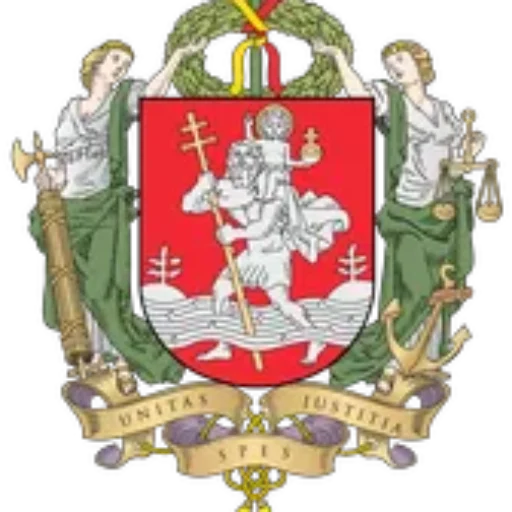Nestled in the heart of Lithuania’s capital, Vilnius Old Town stands as a testament to the city’s rich history and cultural heritage. This UNESCO World Heritage site, spanning approximately 3.6 square kilometers, is not merely a collection of ancient buildings but a vibrant, living part of modern Vilnius. Let’s embark on a journey through the winding cobblestone streets and discover the treasures that make Vilnius Old Town a must-visit destination for history enthusiasts and culture seekers alike.
A Tapestry of Architectural Styles
One of the most striking features of Vilnius Old Town is its diverse architectural landscape. As you wander through its streets, you’ll encounter a harmonious blend of Gothic, Renaissance, Baroque, and Neoclassical styles. This architectural diversity reflects the city’s complex history and the various cultural influences that have shaped it over the centuries.
The Gothic St. Anne’s Church, with its intricate brick façade, stands as one of the most iconic examples of this style in Eastern Europe. Legend has it that Napoleon Bonaparte was so enamored with the church that he wished to carry it back to Paris “in the palm of his hand.” In contrast, the Baroque St. Peter and St. Paul’s Church showcases elaborate stucco decorations and over 2,000 stucco figures, epitomizing the grandeur of the Baroque period.
Historical Significance
Vilnius Old Town’s history dates back to the Middle Ages, with the city first mentioned in written sources in 1323. Over the centuries, it has been a melting pot of cultures, religions, and ideas, earning it the nickname “Jerusalem of the North” due to its significant Jewish population and cultural contributions.
The town’s layout, with its network of narrow streets and small squares, has remained largely unchanged since the 16th century. This preservation of medieval urban planning makes Vilnius Old Town one of the largest surviving medieval old towns in Northern Europe.
Cultural Landmarks and Hidden Gems
While exploring Vilnius Old Town, visitors are treated to a wealth of cultural landmarks. The Gediminas Tower, perched atop a hill, offers panoramic views of the old town and serves as a powerful symbol of Lithuanian independence. The nearby Cathedral Square, dominated by the neoclassical Vilnius Cathedral, has been the city’s heart for centuries.
Hidden among the more famous sites are lesser-known treasures waiting to be discovered. The quaint Literatu Street, adorned with artistic plaques dedicated to Lithuanian and foreign writers, offers a unique outdoor gallery experience. The mysterious Constitution of the Republic of Užupis, an artist’s district within the old town, adds a touch of whimsy with its unusual laws like “Everyone has the right to be unique” and “A dog has the right to be a dog.”
A Living, Breathing Community
What sets Vilnius Old Town apart from many historical districts is that it remains a vibrant, living part of the city. Approximately 20,000 people call this area home, ensuring that it’s not just a tourist attraction but a thriving community. The narrow streets are lined with local shops, cafes, and restaurants, offering visitors a chance to experience authentic Lithuanian culture and cuisine.
The old town comes alive during various festivals and events throughout the year. The Kaziukas Fair, a traditional craft fair held annually since the 17th century, fills the streets with local artisans and their handmade goods. The Vilnius Festival, showcasing classical music and opera, attracts world-class performers and music lovers from around the globe.
Preservation and Challenges
While Vilnius Old Town’s UNESCO World Heritage status has helped preserve its historical integrity, it also faces modern challenges. Balancing the needs of a growing tourism industry with the preservation of the area’s authenticity and the quality of life for its residents is an ongoing concern.
Efforts to restore and maintain the old buildings while adapting them to modern use require significant investment and careful planning. The city has implemented various conservation projects, such as the restoration of the Bastion of Vilnius City Wall, to ensure that future generations can continue to appreciate this historical treasure.
Vilnius Old Town is more than just a collection of ancient buildings and historical sites. It is a living, breathing testament to Lithuania’s rich cultural heritage and resilience. As visitors wander through its cobblestone streets, they’re not just observing history; they’re participating in the ongoing story of a city that has withstood the test of time.
From its diverse architectural styles to its hidden cultural gems, from its vibrant community life to the challenges of preservation, Vilnius Old Town offers a unique window into the soul of Lithuania. It stands as a reminder of the importance of preserving our historical heritage while embracing the future, making it a truly special destination for travelers from around the world.
Whether you’re a history enthusiast, an architecture lover, or simply a curious traveler, Vilnius Old Town promises an unforgettable journey through time, culture, and the enduring spirit of the Lithuanian people. As you leave its charming streets, you’ll carry with you not just memories, but a deeper appreciation for the rich tapestry of European history and the importance of preserving our shared cultural heritage.

